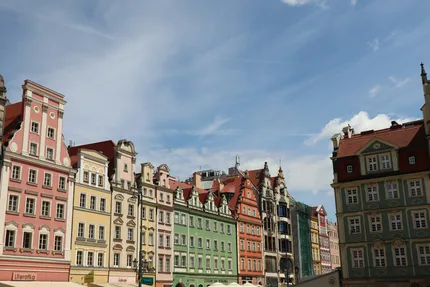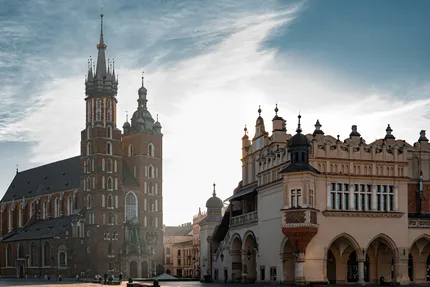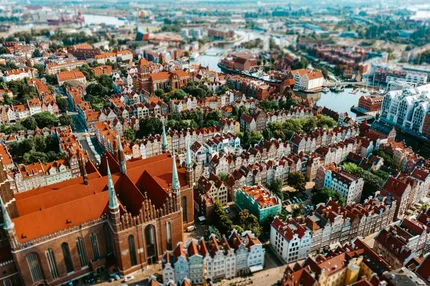CityTouring
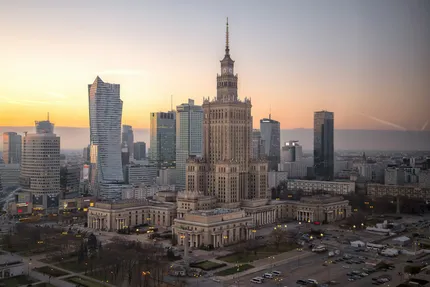
City trip to Warsaw
PolandWarsaw, Poland's vibrant capital, is a city that beautifully marries its rich historical tapestry with a dynamic modern life. Almost completely rebuilt after World War II, Warsaw now stands as an impressive symbol of resilience, blending Gothic and Baroque buildings with gleaming skyscrapers. In the Old Town, a UNESCO World Heritage site, travelers can explore charming cobblestone streets, savor traditional Polish dishes and marvel at the impressive Royal Castle. For those interested in history and culture, the Warsaw Uprising Museum offers a poignant insight into the city's tumultuous past during World War II.
Additionally, Warsaw has a thriving arts and music scene, with world-class venues like the National Philharmonic and numerous galleries showcasing contemporary works. The city is also a green oasis with Lazienki Park, a vast area ideal for leisure walks and home to peacocks and the picturesque Lazienki Palace. Food lovers will delight in Warsaw’s emerging culinary scene, which combines traditional Polish cuisine with modern culinary trends, ensuring a feast for the senses.
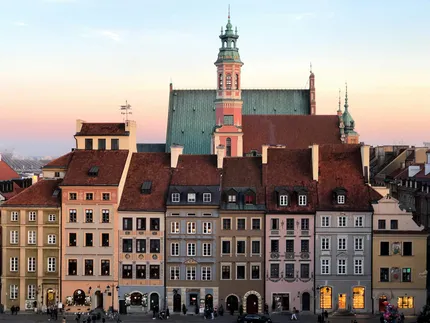
Old Town
Warsaw’s Old Town, a UNESCO World Heritage site, showcases the city’s resilience with its post-war reconstruction. Visitors can explore St. John's Archcathedral, the Royal Castle, and picturesque cobblestone streets lined with colorful buildings. Enjoy vibrant squares like Castle Square and Market Square, dotted with cafes and street performers, providing insight into both historical and contemporary Polish culture.
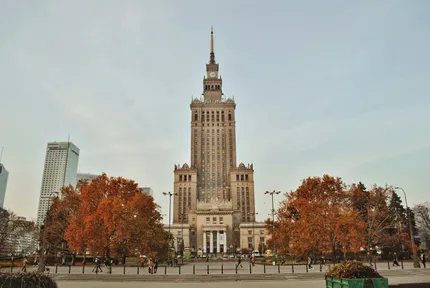
Palace of Culture and Science
The Palace of Culture and Science, a gift from the Soviet Union, stands as Warsaw's tallest building. This iconic skyscraper hosts theaters, museums, and concert halls. Visitors can take panoramic views from its 30th-floor observation deck. The palace, blending Socialist Realist and Art Deco styles, symbolizes Warsaw's complex history and serves as a center for cultural and business events.
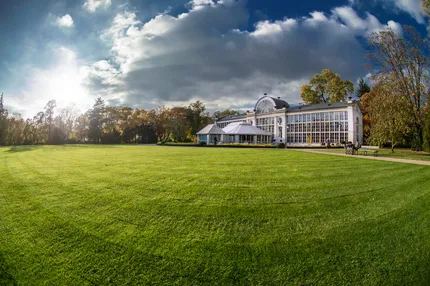
Lazienki Park
Lazienki Park, Warsaw's largest park, spans 76 hectares and is a cultural hub featuring verdant landscapes, serene lakes, and historical monuments. Highlights include the neoclassical Palace on the Isle, an amphitheater, and the Chopin Monument. Visitors can enjoy leisurely walks, boat rides, and outdoor concerts amid its picturesque surroundings, making it a favorite for both locals and tourists.
Warsaw is ideal for cultural enthusiasts, history buffs, and those seeking a modern city experience enriched with historical depth. Art and music lovers will find the city's numerous galleries, theaters, and philharmonic events a delight. There is plenty to discover for academics and scholars as Warsaw boasts many prestigious universities and educational conferences. For those keen on history, Warsaw's numerous museums and historical sites provide a comprehensive narrative of both its national and European significance. Culinary travelers will appreciate the growing gastronomic scene that combines traditional Polish flavors with innovative techniques.
Green spaces such as Lazienki Park and Wilanów Palace Gardens allow leisurely exploration for tourists who enjoy the outdoors. The city's top experiences focus on cultural immersion and urban exploration. With its affordability, Warsaw attracts budget-conscious travelers who are looking for a rich cultural experience without the hefty price tag often associated with other European capitals.
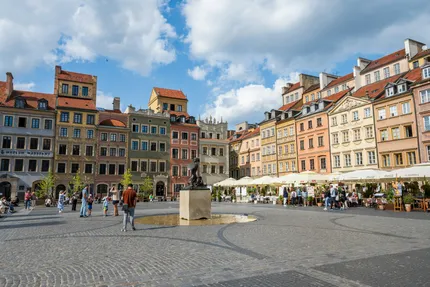
Best time to visit Warsaw
The best time to visit Warsaw is during late spring (May and June) or early autumn (September). During these periods, the weather is comfortably mild, allowing visitors to enjoy the city's parks and outdoor attractions without the summer tourist crowds. The temperatures are pleasant, ranging from 15°C to 25°C (59°F to 77°F), making it perfect for exploring both the historical sites and the abundant green spaces. Moreover, these times of the year are when various cultural festivals take place, offering a taste of local traditions and a vibrant Polish cultural experience.
More activities and things to see in Warsaw:
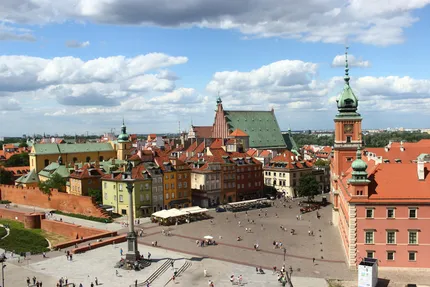
Royal Castle
The Royal Castle in Warsaw, a UNESCO World Heritage site, is a stunning example of baroque architecture that served as the official residence of Polish monarchs. Reconstructed after World War II, the castle now functions as a museum showcasing Poland's history, art collections, and royal chambers. Visitors can explore opulent rooms, including the Great Assembly Hall, and important artifacts from Poland's cultural heritage.
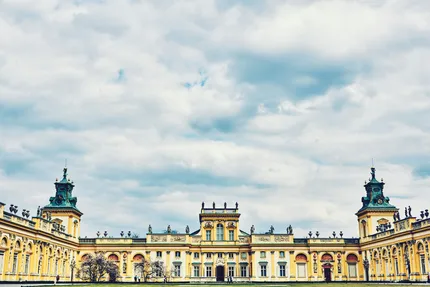
Wilanów Palace
Wilanów Palace, located in Warsaw, is an iconic Baroque royal residence that offers insight into Polish history and art. Built in the late 17th century for King John III Sobieski, it showcases richly decorated interiors, art collections, and extensive gardens. The palace also hosts various cultural events and exhibitions, making it a popular attraction for both tourists and locals.
Warsaw Uprising Museum
The Warsaw Uprising Museum in Warsaw offers an in-depth look at the 1944 Warsaw Uprising against German occupation. It showcases a wide array of exhibits, including photographs, personal accounts, and multimedia presentations. The museum provides a comprehensive narrative through displays like a replica of a B-24 Liberator and a touching memorial wall. It's an insightful experience for those interested in World War II history.
POLIN Museum of the History of Polish Jews
The POLIN Museum of the History of Polish Jews, located in Warsaw, showcases over a thousand years of Polish-Jewish history. The museum's core exhibition is an immersive, narrative exhibition offering multimedia installations, artifacts, and documents that delve into the cultural, social, and political facets of Jewish life in Poland. It also features temporary exhibitions, educational programs, and cultural events promoting the dialogue of past and present.
Zlote Tarasy
Złote Tarasy is a prominent shopping and entertainment complex located in the heart of Warsaw, Poland. It features a distinctive architecture with its futuristic glass dome, housing over 200 retail outlets, restaurants, and a multiplex cinema. Positioned near the central railway station, it is a convenient and popular destination for both locals and tourists seeking shopping, dining, and leisure activities in the Polish capital.
Copernicus Science Centre
The Copernicus Science Centre in Warsaw is a premier interactive science museum that encourages visitors to engage with hands-on exhibits across various scientific fields. It houses over 400 exhibits, planetarium shows, and educational workshops. The centre aims to spark curiosity and creativity, making science accessible and exciting for all ages, and highlighting the importance of scientific discovery.
Praga District
The Praga District in Warsaw offers a glimpse into the city's vibrant and historic past with its eclectic architecture, street art, and thriving cultural scene. Known for its preserved 19th-century buildings and cobblestone streets, the district is also home to numerous art galleries, cafes, and the famous Praga Museum. This once-neglected area now pulsates with creativity and a unique local charm.
Warsaw University Library Rooftop Garden
The Warsaw University Library Rooftop Garden is one of Europe's largest and most beautiful rooftop gardens, offering panoramic views of the city. Spanning over a hectare, it features diverse plant species, water installations, and calming paths perfect for a leisurely stroll or quiet reflection. Opened in 2002, this green oasis is accessible to the public, providing a peaceful retreat amidst Warsaw's urban landscape.
Nozyk Synagogue
Nozyk Synagogue is the only surviving pre-war synagogue in Warsaw, offering a glimpse into the rich Jewish heritage of the city. Constructed in the early 20th century in a neo-Romanesque style, it serves as both a house of worship and a cultural center. Visitors can explore its historical architecture and attend concerts or religious services, enriching their understanding of Jewish traditions in Poland.
Getting around in Warsaw
Warsaw is a city with a comprehensive public transportation system that includes buses, trams, and the metro. The city's public transit is efficient and affordable, making it easy to navigate without a car. Tickets are integrated, so the same ticket can be used on all forms of transportation. Biking is also a viable option, as Warsaw has a growing network of bike paths and a bike-sharing program known as Veturilo. While the city is pedestrian-friendly in certain areas, such as the Old Town and other central districts, some parts may require public transport to avoid longer walking distances. Driving in Warsaw is less recommended due to traffic congestion, especially during peak hours. Taxis and ride-sharing services are readily available for more convenience. Overall, public transport is the best way to get around the city, supplemented by walking or cycling in more scenic or crowded areas.
Getting to Warsaw
Warsaw is served by Warsaw Chopin Airport, located about 10 kilometers from the city center, and the smaller Warsaw Modlin Airport. Chopin Airport offers numerous international connections to major European cities, as well as some direct flights to Asia and North America. From the airport, the city center can be accessed by train, bus, or taxi. Rail connections to Warsaw are robust, with frequent trains connecting the city to other major Polish cities and international rail services to cities like Berlin, Vienna, Prague, and Moscow. Long-distance buses also connect Warsaw with many European destinations, with companies like FlixBus and Eurolines operating routes to and from the city. Train and bus travel to Warsaw is facilitated by Warsaw Central Station, located in the city center, offering a convenient link to other parts of Poland and Europe.
